 Stars
StarsRecent Blog Posts
Can You Sue a Group Home for Neglect or Abuse?
 When you entrust the care of a developmentally disabled adult to a group home, you expect safety, dignity, and compassion. Unfortunately, not all facilities live up to that responsibility. Abuse and neglect in group homes can leave residents physically harmed, emotionally traumatized, or worse — and it often goes unnoticed until serious damage has been done.
When you entrust the care of a developmentally disabled adult to a group home, you expect safety, dignity, and compassion. Unfortunately, not all facilities live up to that responsibility. Abuse and neglect in group homes can leave residents physically harmed, emotionally traumatized, or worse — and it often goes unnoticed until serious damage has been done.
If you suspect that a loved one has been harmed in a Maryland group home, you may be wondering: Can I sue the group home for what happened? In many cases, the answer is yes. Our Maryland personal injury attorney will work with you to determine your options and next steps.
What Counts as Abuse or Neglect in a Group Home?
Maryland group home caregivers are required to abide by the law, which has strict definitions as to what the responsibilities of a care provider are. Even if a caregiver never strictly abuses a resident, neglecting these responsibilities can lead to a seriously diminished quality of life for the resident.
4 Reasons You Need an Attorney After a Maryland Truck Crash
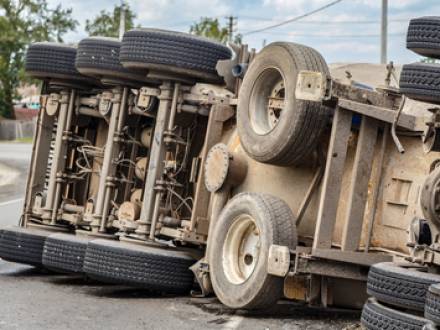 Any motor vehicle accident can be severe, but truck crashes are frequently devastating and life-changing. You should strongly consider retaining a Maryland truck accident attorney if you or a loved one was injured because of a trucker’s negligence. Our tractor-trailer accident lawyers at Serafini Law will aggressively defend your rights and demand maximum compensation for your injuries.
Any motor vehicle accident can be severe, but truck crashes are frequently devastating and life-changing. You should strongly consider retaining a Maryland truck accident attorney if you or a loved one was injured because of a trucker’s negligence. Our tractor-trailer accident lawyers at Serafini Law will aggressively defend your rights and demand maximum compensation for your injuries.
Truck Regulations Are Complicated
Truck accidents involve myriad state and federal regulations. For example, the Federal Motor Carrier Safety Administration (FMCSA) enforces rules that regulate truck driver hours, maintenance schedules, cargo limits, and driver hiring requirements. Any trucking regulation violation by the company or driver can significantly impact your case.
Truck accident attorneys are specialists in handling these complex laws. Their expertise allows them to navigate the intricate web of trucking regulations with ease. For instance, your attorney may determine that the trucker was fatigued and exceeded the FMCSA’s hours-of-service rules, leading to the accident.
What Damages Can I Claim for a Severe Car Accident in Maryland?
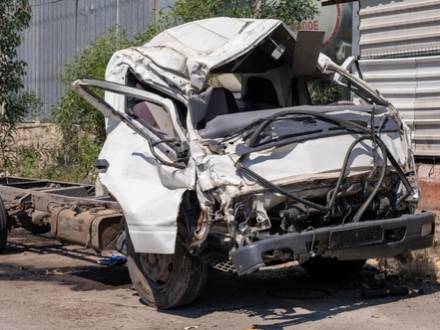 In Maryland, the person responsible for a car accident is also liable for the resulting economic and noneconomic damages. Severe car accidents can have devastating consequences, especially for the victims of negligent drivers. If you have questions about what damages you can recover from your accident, a Hagerstown, MD car accident attorney will help you identify your loss and fight to protect your right to demand compensation.
In Maryland, the person responsible for a car accident is also liable for the resulting economic and noneconomic damages. Severe car accidents can have devastating consequences, especially for the victims of negligent drivers. If you have questions about what damages you can recover from your accident, a Hagerstown, MD car accident attorney will help you identify your loss and fight to protect your right to demand compensation.
Common Losses in Car Accident Claims
The first stage of building a car accident case is investigating the incident to collect evidence that proves your liability claim and identifies all recoverable damages. Losses can vary, but some common examples of economic damages are:
-
The costs associated with medical treatment for your injuries, including the estimated cost of care you may need in the future
What Is Maryland’s Contributory Negligence System For Car Accidents?
 Auto accidents are usually upsetting and painful, but Maryland’s unusual contributory negligence system for car accident claims adds legal uncertainty. In contributory negligence, if the injured party contributed in any way to the accident, even 1 percent, they cannot receive compensation for their damages, including medical bills, lost income, pain and suffering, etc.
Auto accidents are usually upsetting and painful, but Maryland’s unusual contributory negligence system for car accident claims adds legal uncertainty. In contributory negligence, if the injured party contributed in any way to the accident, even 1 percent, they cannot receive compensation for their damages, including medical bills, lost income, pain and suffering, etc.
Maryland is one of only a few states and jurisdictions - including North Carolina, Alabama, and Washington, D.C. - still using the rule. Critics of contributory negligence argue that the system is outdated and sometimes leaves critically injured parties without compensation for their medical bills. Supporters say contributory negligence encourages people to be more responsible and decreases frivolous personal injury lawsuits.
Familiarizing yourself with the contributory negligence system is critical for understanding your rights after a car accident. A Maryland auto accident attorney can provide additional information about contributory negligence and whether you may be entitled to compensation after your accident.
Is a Delayed Cancer Diagnosis Medical Malpractice?
 A timely cancer diagnosis is critical for effective treatment and improving a patient’s survival rate. When a doctor fails to promptly diagnose cancer, the consequences can be life-threatening, leaving patients wondering if they have grounds for a medical malpractice claim.
A timely cancer diagnosis is critical for effective treatment and improving a patient’s survival rate. When a doctor fails to promptly diagnose cancer, the consequences can be life-threatening, leaving patients wondering if they have grounds for a medical malpractice claim.
State law requires those pursuing a malpractice claim to follow specific legal procedures. Under Maryland Courts and Judicial Proceedings Code § 3-2A-04, patients must submit a certificate of a qualified expert within 90 days of filing their claim. This certificate must confirm that the healthcare provider failed to meet the standard of care and that it directly caused the patient's injury. If you need help navigating this process, a Maryland medical malpractice attorney can help you understand the legal requirements and build a strong case for the compensation you deserve.
How Can Black Box Data Help My Truck Accident Claim?
 A truck accident can leave victims with life-altering injuries, mounting medical bills, and countless questions about what went wrong. In many instances, the answers lie within the truck’s black box, which is a powerful tool that records critical data about the vehicle’s movements before a crash. Officially known as an Event Data Recorder (EDR), this device can reveal whether the truck was speeding, when the driver hit the brakes, and even if the driver was on the road too long without rest. If you were injured in a truck accident, an experienced Maryland personal injury lawyer can help you obtain and analyze this important data to build a strong case for compensation.
A truck accident can leave victims with life-altering injuries, mounting medical bills, and countless questions about what went wrong. In many instances, the answers lie within the truck’s black box, which is a powerful tool that records critical data about the vehicle’s movements before a crash. Officially known as an Event Data Recorder (EDR), this device can reveal whether the truck was speeding, when the driver hit the brakes, and even if the driver was on the road too long without rest. If you were injured in a truck accident, an experienced Maryland personal injury lawyer can help you obtain and analyze this important data to build a strong case for compensation.
What Is a Truck’s Black Box?
Most commercial trucks are equipped with an EDR, and these devices record essential data, such as:
What Should You Do Right After a Car Accident?
 A car accident can be a traumatic experience, but taking the right steps immediately after the crash can protect your health, legal rights, and ability to file an injury claim. Knowing what to do and what mistakes to avoid can make all the difference in your recovery and with any insurance or legal proceedings.
A car accident can be a traumatic experience, but taking the right steps immediately after the crash can protect your health, legal rights, and ability to file an injury claim. Knowing what to do and what mistakes to avoid can make all the difference in your recovery and with any insurance or legal proceedings.
If you have been in a crash, following a clear accident checklist can help you stay safe and protect your rights. A Maryland car accident lawyer can further guide you through the legal process to ensure you receive fair compensation.
What Is the First Thing You Should Do After a Car Accident?
The most important step is to check for injuries. Your safety and the safety of others should be your top priority. Call 911 immediately if anyone is injured. Turning on your hazard lights will alert other drivers of the crash. If possible, move to a safe location, but do not completely leave the scene.
The Hidden Dangers of Understaffed Nursing Homes
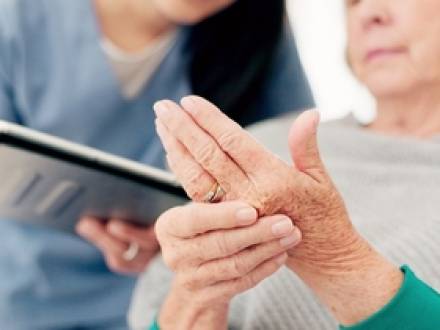 Nursing homes are responsible for providing elderly residents with safe, attentive care. However, when these facilities are understaffed, each patient’s safety is at risk. Families trust these facilities to care for their loved ones, but what happens when there are not enough caregivers to meet residents’ needs? If a loved one has suffered due to nursing home abuse or neglect, a skilled Maryland personal injury attorney can help your family understand the legal options available for pursuing justice.
Nursing homes are responsible for providing elderly residents with safe, attentive care. However, when these facilities are understaffed, each patient’s safety is at risk. Families trust these facilities to care for their loved ones, but what happens when there are not enough caregivers to meet residents’ needs? If a loved one has suffered due to nursing home abuse or neglect, a skilled Maryland personal injury attorney can help your family understand the legal options available for pursuing justice.
How Does Understaffing Lead to Elder Neglect?
When a nursing home does not have enough staff, caregivers are forced to handle more responsibilities than they can manage. As a result, elderly residents, many of whom have medical conditions or mobility limitations, are at risk of neglect. Residents may experience:
-
Delayed or inadequate assistance with basic needs like bathing, dressing, and eating
Head-On Crash Near Knollwood Drive Leaves One Dead
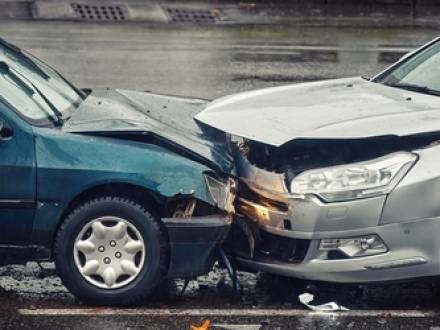 On February 20, 2025, a driver traveling northwest on Generals Highway in a Hyundai Sonata crossed over the center line into oncoming traffic, hitting a Toyota 4Runner and the driver and one passenger in a head-on collision. The Hyundai driver was pronounced dead at Anne Arundel Medical Center, while the driver and the passenger in the Toyota were taken to two different hospitals, where it was determined that their injuries were not life-threatening. The incident remains under investigation.
On February 20, 2025, a driver traveling northwest on Generals Highway in a Hyundai Sonata crossed over the center line into oncoming traffic, hitting a Toyota 4Runner and the driver and one passenger in a head-on collision. The Hyundai driver was pronounced dead at Anne Arundel Medical Center, while the driver and the passenger in the Toyota were taken to two different hospitals, where it was determined that their injuries were not life-threatening. The incident remains under investigation.
Head-on crashes are the most dangerous type of car accident, accounting for 58 percent of all traffic accident fatalities in 2022, even though this type of accident only accounts for 14 percent of all types of auto accidents. If you have been involved in a head-on collision caused by the negligence of another driver or your loved one died from injuries sustained in a head-on collision, talking to a Bethesda, MD personal injury attorney can make a significant difference in the outcome of your accident.
Why Do Catastrophic Injuries Require an Experienced Attorney?
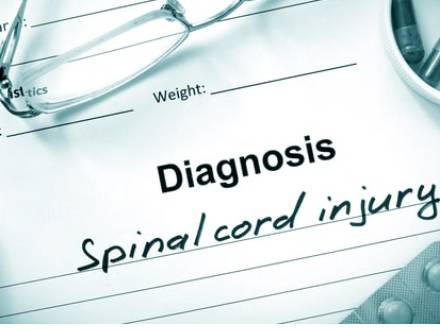 Any auto accident has the potential to cause severe injuries or even death. Some accidents will result in catastrophic injuries, which require long-term medical care, extensive rehabilitation, and substantial financial resources to support the ongoing needs and quality of life of the victim and his or her family.
Any auto accident has the potential to cause severe injuries or even death. Some accidents will result in catastrophic injuries, which require long-term medical care, extensive rehabilitation, and substantial financial resources to support the ongoing needs and quality of life of the victim and his or her family.
It can be an uphill battle when dealing with an insurance company following a catastrophic injury. Big insurance companies are famous for finding ways to minimize the payout or deny a claim altogether. Your insurance company may question the severity of your injuries or attempt to find you partially liable for the accident.
Following an automobile accident, it can be helpful to access Maryland’s motor vehicle collision policy information sheet to ensure you do not accidentally do something that will damage your catastrophic injury claim. Speaking to an experienced Germantown, MD personal injury attorney will ensure you receive fair, comprehensive compensation for all your current and future care needs.





